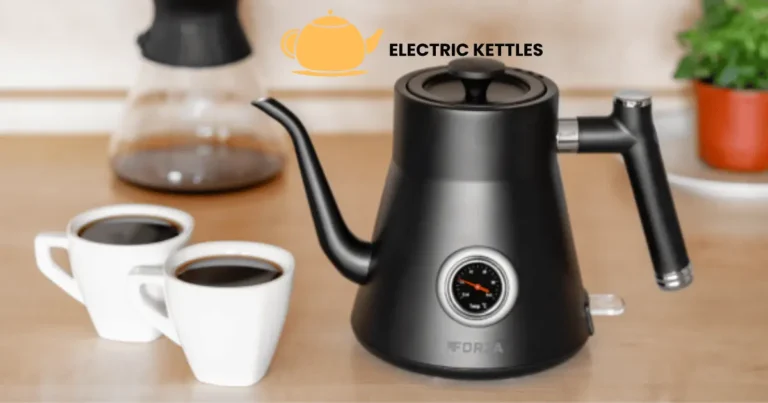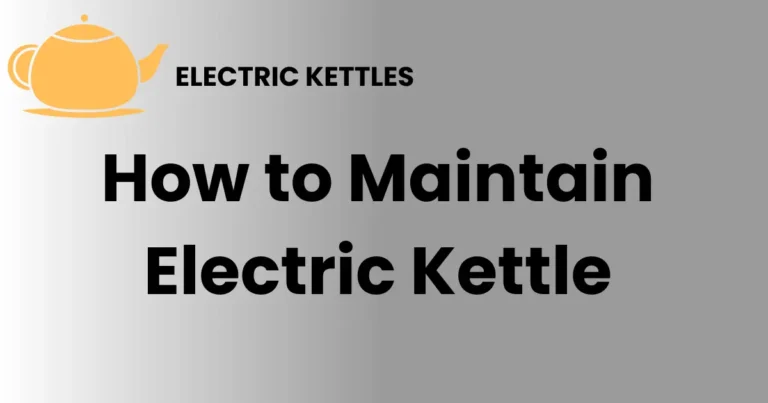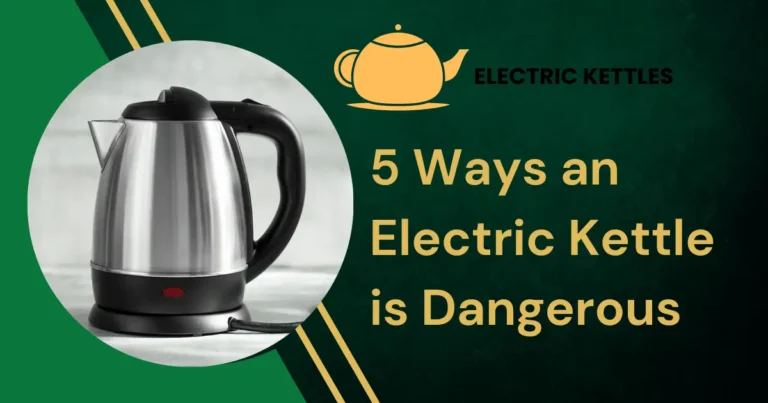How to Make Electric Kettle Quiet
Electric kettles often make noise while boiling water. This noise comes from the heating element and the boiling process. Some kettles are louder due to their design or materials. The sound can be annoying, especially in quiet environments like early mornings or offices.
Reducing noise in electric kettles is important for comfort. A quieter kettle makes using it more pleasant, without disturbing others. It also helps maintain a peaceful environment, especially in shared spaces.
Common Causes of Noise in Electric Kettles
Electric kettles often make noise due to their heating elements. As the water heats up, bubbles form and burst, creating sound. This bubbling noise becomes louder as the water reaches a rolling boil. The movement of water inside the kettle also contributes to the noise, making the boiling process quite loud.
Another common cause of noise is the kettle’s material. Metal kettles usually produce more sound than plastic ones because metal amplifies the boiling noise. The type of material used can have a big impact on how loud the kettle gets during use.
The design of the kettle also plays a role. Kettles with loose or poorly fitting lids can rattle during boiling, adding to the noise. Spouts or lids that are not tightly secured allow steam to escape, creating additional sounds. These small design flaws can make the kettle noisier than it should be.
Simple Methods to Reduce Noise
Adjust the Water Level
One of the simplest ways to reduce noise in your electric kettle is by adjusting the water level. Keeping the water between the minimum and maximum markings helps control the bubbling and boiling sounds. Too much water can cause excessive bubbling, while too little can lead to loud boiling. By maintaining a balanced water level, you can reduce the noise during use.
Use a Soft Surface
Placing your electric kettle on a soft surface like a rubber mat or towel can significantly reduce noise. These soft materials absorb the vibrations caused by the boiling process, minimizing the rattling and shaking that often happens. This method is inexpensive and easy to implement, making it a quick solution to reduce unwanted sound.
Position the Kettle Strategically
Where you place your kettle can also affect the amount of noise it produces. Putting it in a corner or near a wall can help block and contain the sound, preventing it from spreading throughout the room. This is especially useful in open spaces or quiet environments where kettle noise might be more noticeable.
Check the Lid and Spout
Make sure the kettle’s lid is tightly secured to reduce rattling. A loose lid can create extra noise as the steam escapes. Ensuring a snug fit helps contain the steam and reduces the hissing or whistling sounds that might occur. Checking the spout and lid regularly can prevent additional noise during boiling.
Advanced Solutions for a Quieter Kettle
Use Soundproof Mats or Pads
One advanced solution is using soundproof mats or pads under the kettle. These are designed to absorb vibrations and reduce noise. Unlike regular soft surfaces, soundproof mats are specifically made to handle the vibrations caused by the boiling process, making them more effective. This can greatly reduce the noise level, especially if you use your kettle frequently.
Invest in a Noise-Reducing Electric Kettle
Some electric kettles are designed to operate more quietly. These kettles come with noise-reducing technology, such as insulated walls, quieter heating elements, and better design features. Investing in one of these models can significantly reduce the noise you experience during boiling. Although these kettles may cost more, the quieter operation is worth it for those sensitive to sound.
Regular Maintenance to Minimize Noise
Regular maintenance of your kettle can also help reduce noise. Cleaning the kettle, especially descaling the heating element, can make a noticeable difference. Mineral build-up can make the kettle noisier, as the heating process becomes less efficient. By keeping your kettle clean and well-maintained, you can prevent excess noise over time.
Insulate the Kettle
For those who want to take an extra step, insulating the kettle can help reduce noise. Adding a layer of heat-resistant material around the kettle can help contain the sound. This method requires a bit more effort and is usually done with DIY soundproofing kits, but it can offer noticeable improvements in noise reduction.
Design Features that Make Kettles Noisier
The design, shape, and size of the kettle also contribute to noise levels. Kettles with a wider base or a tall, narrow body can cause uneven boiling, leading to more noise. The shape impacts how the water moves inside the kettle, and certain designs cause more turbulence during the heating process, resulting in louder sounds.
The material used in the kettle’s construction plays a big role in how noisy it is. Metal kettles, especially stainless steel, tend to amplify boiling sounds. The metal surface vibrates more, which can make the noise louder. On the other hand, plastic kettles are usually quieter because plastic absorbs sound better than metal.
The type of heating element in the kettle can also make a difference. Exposed heating elements tend to make more noise during boiling, as they cause more direct bubbling. In contrast, kettles with concealed heating elements are generally quieter because the water heats more evenly. This design feature impacts both the efficiency and the noise level of the kettle.
How to Modify an Existing Kettle to Reduce Noise
One simple modification to reduce noise is placing a soundproof mat under your electric kettle. These mats absorb vibrations caused by the boiling process and help minimize rattling sounds. You can buy a soundproof mat online or use a rubber pad for similar results. This easy adjustment can make your kettle quieter without any complex alterations.
Another way to modify your kettle is by adding insulation. You can wrap the kettle in heat-resistant material, such as foam or silicone, to reduce noise. This helps to contain the sound and prevent it from spreading. Insulating the kettle also improves energy efficiency by keeping the heat inside, but it requires more effort and materials to apply.
If your kettle has a loose lid or poorly fitting spout, you can modify it to reduce noise. Check the lid for any loose parts and tighten them as needed. You can also add a rubber gasket or seal around the spout to prevent steam from escaping noisily. Ensuring the lid and spout fit snugly will reduce rattling and hissing sounds during boiling.
Conclusion
Making your electric kettle quieter can significantly improve your kitchen experience. By adjusting the water level, placing the kettle on a soft surface, and checking the lid and spout, you can reduce everyday noise. These simple methods help create a more pleasant environment, especially in quiet or shared spaces.
For a more advanced approach, consider using soundproof mats, investing in a noise-reducing kettle, or insulating the kettle. Regular maintenance, like descaling, also plays a crucial role in minimizing noise.







